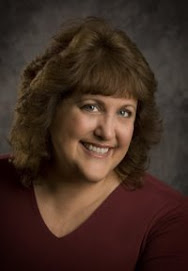 One of the most important elements for successful book publicity is having printed copies ready for distribution. While this may sound like a no-brainer to some, many authors approach me to publicize their books before they're available for stores to order. This situation creates a dilemma for everyone involved: the bookseller, who wants to give the writer a signing date, but doesn't see the book available through the distribution channels he likes to work with; the publicist, who has to scramble to contact the publisher about the distribution issue; the publisher, who then has to contact distributors and buyers regarding the listing; and the author who misses out on a good signing event.
One of the most important elements for successful book publicity is having printed copies ready for distribution. While this may sound like a no-brainer to some, many authors approach me to publicize their books before they're available for stores to order. This situation creates a dilemma for everyone involved: the bookseller, who wants to give the writer a signing date, but doesn't see the book available through the distribution channels he likes to work with; the publicist, who has to scramble to contact the publisher about the distribution issue; the publisher, who then has to contact distributors and buyers regarding the listing; and the author who misses out on a good signing event.Many chain bookstores, like Borders and Barnes & Noble, prefer to order through their own distribution systems. This is an important concept for self-published authors to understand, because it often takes a certain amount of time (sometimes up to three months) to get the books into the system. Publishers will handle applying for ISBNs and setting up distributors, but writers should be aware that doing so takes time. And not all publishers do their homework; I've worked with a few authors who've had their promotions stalled while waiting for their book to become available to a certain distributor that a bookseller wants to use.
Most independent booksellers order through wholesale suppliers like Ingram Book Group or Baker & Taylor. Some bookstore managers are willing to order directly from the publisher, especially if the publisher allows returns and will give discounts and/or pay for shipping. Due to high shipping costs and lack of shelf space, many booksellers are now asking authors to bring books to signings. This is known as a consignment arrangement, where the bookstore will take a certain percentage (usually 40%) of any books sold. So, in addition to the expense of purchasing the books himself, the author also has to get them to the store, which can be a headache when the signing isn't local.
When I contact booksellers for book signing dates, the first question they typically ask is not about the book's content or the author. They usually want to know the ISBN number. Most of them will look up the book as we speak on the phone and their second question is invariably whether the book is available for order. If they see a print-on-demand (POD) listing for the book, they often express concern about availability, so I urge my self-published clients to see if the publisher will consider printing an offset run. Most publishers, if there is enough demand for the book, are willing to do so.
It can be tough out there for self-published authors who are marketing books for the first time. Not being ready to take book orders is a mistake that no author wants to make, especially when s/he often has one shot at a prestigious bookstore, speaking venue, or media appearance. Authors can assure themselves a much better chance at success if they take the time to get those proverbial distribution ducks all lined up before they kick off their promotional plans.







